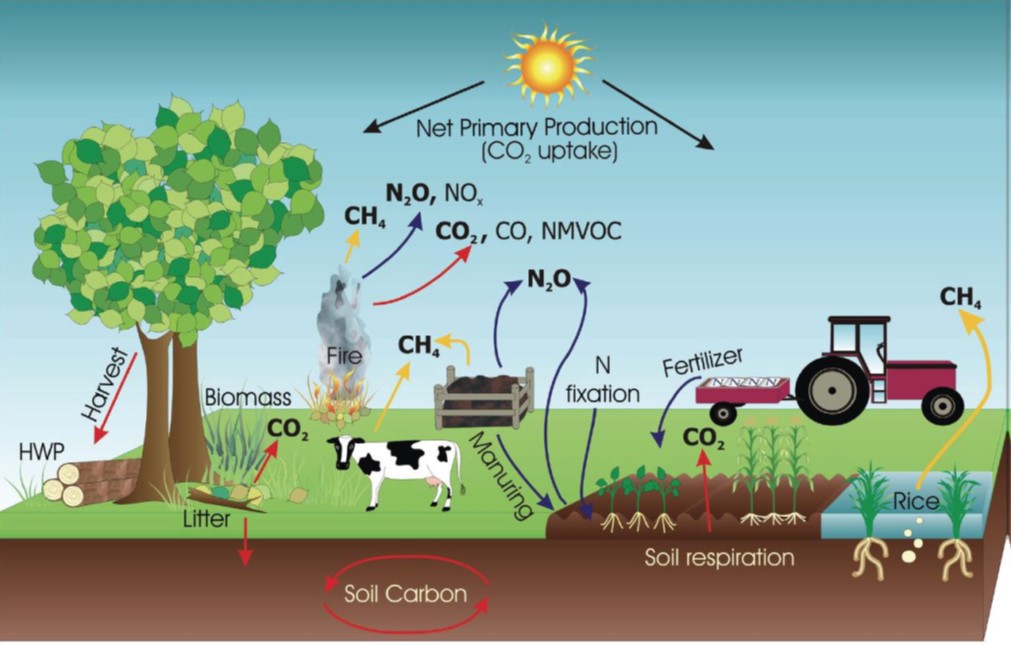What is carbon farming?
According to the handbook of carbon farming by EU, the definition is as follows;
Carbon farming refers to the management of carbon pools, flows and GHG fluxes at farm level, with the purpose of mitigating climate change. This involves the management of both land and livestock, all pools of carbon in soils, materials and vegetation, plus fluxes of carbon dioxide (CO₂) and methane (CH4), as well as nitrous oxide (N2O) (which is included among relevant fluxes of GHGs in the agricultural sector by the Intergovernmental Panel on Climate Change (IPCC) and therefore is considered part of carbon farming). This is illustrated in Figure 1.

Carbon farming is called regenerative farming. It adapts the same principles of natural farming.
Documentary video of carbon farming practice
To understand the actual practices, science evidence ,and benefits, please watch the following video made by NHK (The Japan Broadcasting Corporation)
Carbon Farming: A Climate Solution Under Our Feet – NHK WORLD PRIME (the link to the movie)
Technical Guidance Handbook
EU prepared the technical guidance handbook to practice this farming.
You can find the EU’s approach to carbon farming and technical guide on the following carbon farming page of the EU;
Carbon farming (Climate action age of EU)
Natural farming was scientifically verified to produce healthy foods with minimum inputs and mitigate climate change.
Recently we are facing a lack of agricultural inputs such as chemical fertilizers pesticides and imported grain for livestock.
In the age of sustainability, we should find a way to maximize outputs with minimal energy input.
This is the concept of “Dymaxion” which is a term coined by architect and inventor, Buckminster_Fuller.
Let’s start new businesses with this farming and support this innovative and revolutionary solution for climate change.
